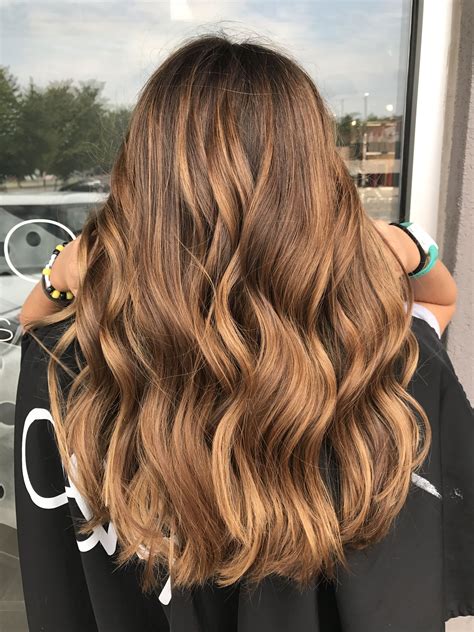Ombre hair color, a technique that seamlessly blends two or more shades, has captivated the beauty industry for over a decade. The brown and blonde ombre variation is particularly beloved for its versatility, flattering on a wide range of skin tones, and ability to create a chic and effortless look.

Why Choose Brown & Blonde Ombre Hair?
- Flattering for Most Skin Tones: The combination of warm brown roots and cool blonde ends complements both warm and cool undertones, creating a natural-looking, sun-kissed effect.
- Low Maintenance: Unlike other coloring techniques, ombre requires minimal upkeep. As the hair grows, the roots blend seamlessly into the medium-tone area, eliminating the need for frequent touch-ups.
- Versatile: Ombre can be customized to suit any length or texture, whether it’s short, long, straight, or curly. The placement and intensity of the color transition can be adjusted to create unique and personalized styles.
- Timeless Trend: Ombre hair color has remained a popular choice for many years, making it a safe and stylish option that won’t go out of style.
Types of Brown & Blonde Ombre
- Classic Ombre: This traditional technique features a gradual transition from brown roots to blonde ends, creating a subtle and natural effect.
- Reverse Ombre: Also known as “Bronde,” this variation reverses the color scheme, starting with blonde roots and blending into brown ends.
- Balayage Ombre: Balayage is a freehand painting technique that creates a more diffused and seamless color transition, resulting in a sun-kissed, beachy look.
- Ombre with Highlights: Adding blonde highlights to the brown roots can add depth and dimension to the overall effect, creating a more dynamic and eye-catching style.
Maintaining Brown & Blonde Ombre Hair
To preserve the vibrancy and longevity of your ombre hair, follow these tips:
- Use Sulfate-Free Shampoo: Sulfates can strip away color, so opt for sulfate-free shampoos to prevent fading.
- Condition Regularly: Deep conditioning treatments help to nourish and hydrate the hair, keeping it healthy and preventing breakage.
- Avoid Heat Styling: Excessive heat can damage the hair and cause color to fade. If using heat tools, apply a heat protectant spray to minimize damage.
- Get Regular Trims: Trimming split ends keeps the hair looking healthy and prevents breakage, which can disrupt the ombre effect.
Pros and Cons of Brown & Blonde Ombre Hair
Pros:
- Versatile and flattering for most skin tones
- Low maintenance and requires minimal upkeep
- Can enhance natural hair color and add depth
- Creates a modern and stylish look
Cons:
- Can be time-consuming to achieve
- May require bleaching, which can damage hair
- Can be more expensive than other hair coloring techniques
FAQs about Brown & Blonde Ombre Hair
- How long does ombre hair color last? With proper care, ombre hair color can last up to 3-6 months.
- Can I do ombre hair color at home? While it is possible, it is recommended to seek professional assistance for optimal results and to avoid any damage.
- What are the best hair products for ombre hair? Look for sulfate-free shampoos, conditioners, and hair masks that are designed for color-treated hair.
- How often should I get my ombre hair touched up? The frequency of touch-ups depends on the growth rate of your hair and the desired look. Generally, every 6-8 weeks is recommended.
- Can I get ombre hair color if I have dark hair? Yes, but it may require multiple bleaching sessions to achieve the desired blonde tone.
- Will ombre hair color damage my hair? Bleaching can damage hair, but using a reputable stylist and following proper aftercare instructions can minimize the risk.
- How much does ombre hair color cost? The cost varies depending on the length of your hair, the salon you choose, and the products used.
- How can I maintain my ombre hair color at home? Use sulfate-free products, deep condition regularly, avoid heat styling, and get regular trims.
